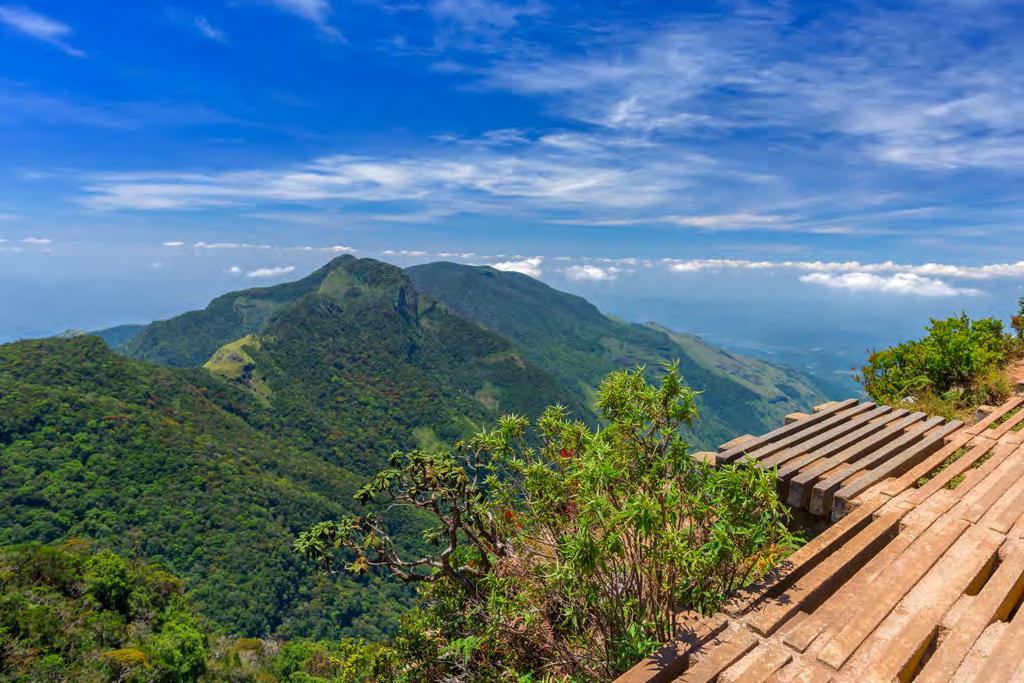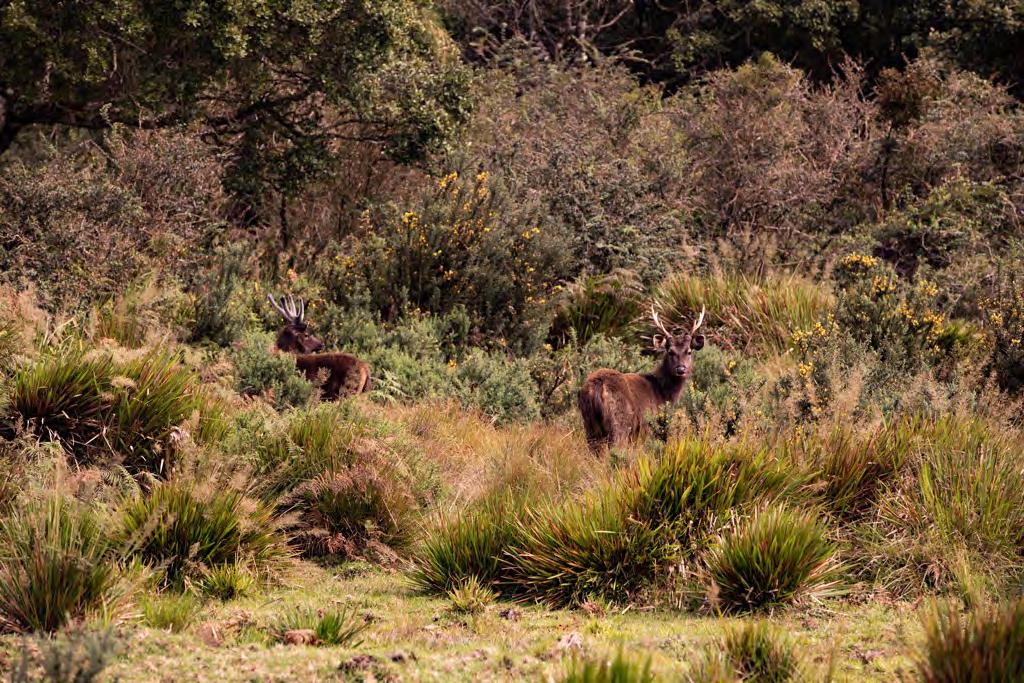
3 minute read
Head In The Clouds - The Cloud Forests of Sri Lanka
“ I think I will be able to, in the end, rise above the clouds and climb the stairs to Heaven, and I will look down on my beautiful life." - Yayoi Kusama

Where wisps of mist descend over the mountain top. Shades of emerald and jade create a skyline of greenery as far as the eye can see. The cry of a falcon soaring over the cliff-tops cuts through the twitter of the songbirds. Standing at a precipice, overlooking a magnificent tract of forest, one whose aura takes your breath away.
They call it World’s End.
When one thinks of Sri Lankan wildlife, one’s mind often jumps to the leopards and elephants of Yala. But tucked away in the folds of the Central Highlands, Horton Plains is a hidden kingdom of rare and magical biodiversity. In fact, UNESCO has designated it a World Heritage Site.
“World’s End” isn’t a euphemism. It’s the precipice that lies at the pinnacle of Horton Plains.
You can see why it must have been named World’s End. In the heart of this magnificent cloud forest, it feels ethereal, where mountain streams gush through the thickets, and the clouds descend swiftly, swirling around you, it feels like you’re about to take your first step into heaven.
Today, Sri Lanka only has about 5% of its cloud forests remaining in the Central Highlands region. But the little that is left is teeming with biodiversity. These beautiful biospheres were deforested when the planters first arrived, centuries ago, to cultivate tea and rubber on the island. The only reason that these tracts of forest were saved was because Sir John Dalton Hooker, a colonial-era officer advised the British Government to leave the forests above 5000 meters in altitude untouched. It turned out to be a stroke of fortune, because this untamed land is home to one of Sri Lanka’s most ancient cultural and natural ecosystems.
For Sri Lankans, Horton Plains is sacred ground. Ancient legend and folklore are rife with stories about this area, which is associated with the demon king Ravanna, in the Ramayana. In the epic, Hanuman ignites a fire in the area that was known as Maha Eliya Thenna that rages on without end.
Maha Eliya Thenna translates to mean a ‘vast, lit ground’ which evokes the idea of a battlefield, yet perhaps it also stands for enlightenment, because when you look down upon the region from your vantage point at World’s End, there is an indefinable feeling of peace and awe that fills you.
Fast forward to the context of today, and Horton Plains continues to be hallowed ground, but this time from a natural perspective. It is one of the world’s most endangered habitats. Several endemic species can only be found in Horton Plains!











